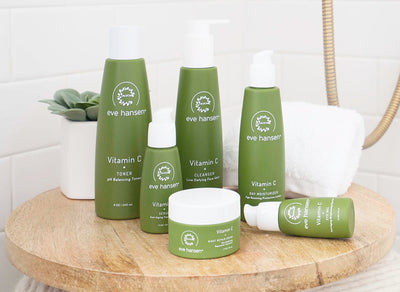
Squalane – while this superhero ingredient has long been a frequent component in top-selling skin care products, it really is only now receiving the recognition it deserves (in our humble opinion). Calling squalane a “good moisturizer” would hardly do the ingredient justice – this stuff is magic!
For years, squalane has been used to treat wounds and lacerations to the skin. Today, the emollient is frequently being used by skin care and beauty industry leaders for its strong moisturizing properties. Incorporating this powerful ingredient into one’s skin care routine can help prevent long-term moisture loss and boost cell regeneration, giving skin a luminous and smooth appearance. As a natural emollient, squalane locks in moisture to alleviate dry patches and prevent the formation of fine lines and age spots. Once absorbed, squalane acts as an antioxidant, antibacterial agent and can even protect against UV damage.
Squalane is commonly harvested from plant sources such as olives, sugarcane, wheat germ oil, and rice bran. Although the substance is almost always plant-derived these days, we suggest reading package labeling to double check that yours is being sourced naturally.
Squalane Vs. Squalene
Squalane is a hydrogenated, lighter version of the ingredient Squalene. We know, super confusing, but bear with us! Squalene with an ‘e’ is a colorless poly-unsaturated hydrocarbon liquid. Squalane with an ‘a’ is a more stable version of that same molecule. Both squalane and squalene are fantastic skin moisturizers and are highly compatible with human skin. Perhaps you’re mostly curious about which to use! Both versions of the molecule are safe, but squalene is heavier, making it helpful for extra-dry or mature skin. Squalene is not recommended for those with oily and acneic skin as its weight makes it a comedogenic. Squalane on the other hand, is great for acne-prone or oily skin as it is lightweight and won’t clog pores.
Squalane mimics our body’s own natural sebum and therefore rapidly penetrates the layers of the skin and easily absorbs without leaving residue.

When To Use?
Now that we know what squalane is and the differences between squalane and squalene, let’s talk about how and when to best apply! Squalane oil can be found in a pure, isolated form, or as one ingredient in a list of many for a particular product.
In its pure form, we suggest applying a few drops of Squalane oil directly to your face after thoroughly cleansing, toning, and applying serums in the mornings and evenings. You can also add a few drops to your favorite cream or serum for an extra boost of hydration.
If squalane is an ingredient in another product you are using, follow usage directions of that specific product.

Wrap Up!
We're going to leave you with a few quick points on why we think your skin will benefit from using squalane:
-
Noncomedogenic
Squalane does not clog pores, making it an ideal moisturizer for people with all skin types.
-
Powerful Moisturizer
Squalane kicks it up a notch in the hydration department when compared to your average moisturizer. Use daily or as a special moisture treatment when your skin is feeling extra thirsty
-
Rapid Skin Penetration
Lighter and more stable than its other version squalene, squalane quickly absorbs (legend says at a rate of 2mm/second!) into skin, and delivers deep skin repair.
-
Skin Renewal
Combat various skin conditions such as dry patches and eczema. Squalane soothes and regenerates dull skin and is a non-irritant.
-
UV Protection
Protect your skin against environmental stressors and the effects of free radicals, reducing uneven pigmentation and the signs of aging. One thing to note: Although helpful, no ingredient is ever a replacement for an SPF. Never forget the sunscreen!
Join us in achieving beauty the natural way! :)


